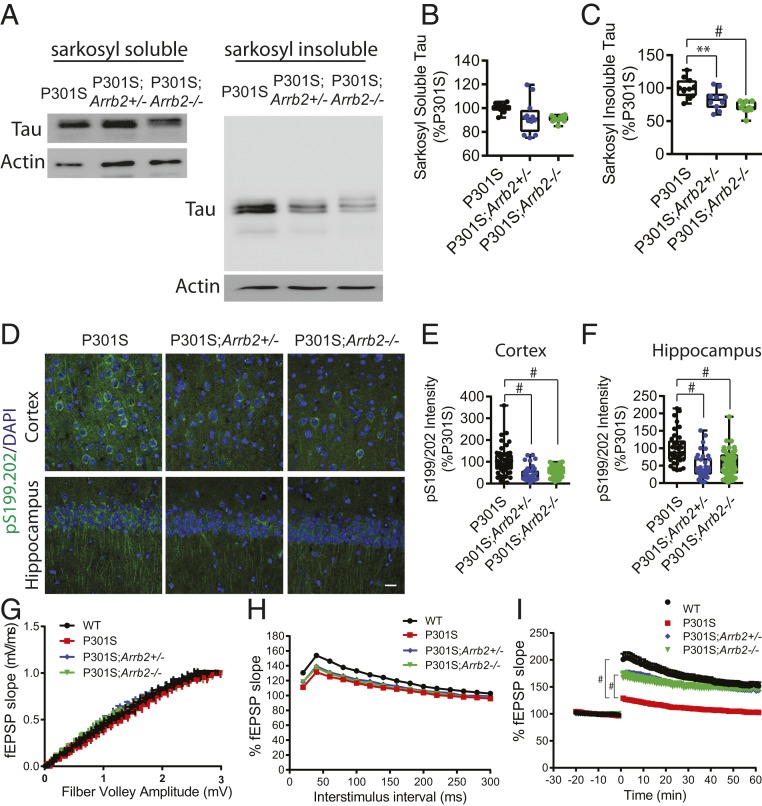Fig. 3.
Genetic reduction in β-arrestin2 mitigates neuronal tauopathy. (A) Representative immunoblots for sarkosyl-soluble and sarkosyl-insoluble tau from brains of 7-mo-old tau P301S, tau P301S/Arrb2+/−, and tau P301S/Arrb2−/− littermates. (B and C) Quantification of four experiments performed as shown in A, **P < 0.005, #P < 0.0001. (D) Representative staining of phospho-tau, pS199/202 (green) in hippocampus, and cortex of 7-mo-old tau P301S, tau P301S/Arrb2+/−, and tau P301S/Arrb2−/− mice. (Scale bar: 20 µm.) (E and F) Quantification of pS199/202 immunoreactivity in cortex and hippocampus (n = 4/genotype, #P < 0.0001). (G) IO analysis generated by stepping up stimulation amplitude from 1 to 15 mV in WT, tau P301S, tau P301S/Arrb2+/−, and tau P301S/Arrb2−/− acute slices (n = 35 to 46 slices/genotype from four mice/genotype). (H) PPF showing fEPSP slope as a function of 30- to 300-ms interstimulus interval (n = 38 to 49 slices/genotype from four mice/genotype). (I) LTP induced by theta burst stimulation showing significant differences in fEPSP slope between tau P301S compared to WT, tau P301S/Arrb2+/−, and tau P301S/Arrb2−/− slices (n = 25 to 43 slices/genotype from four mice/genotype, #P < 0.0001).

